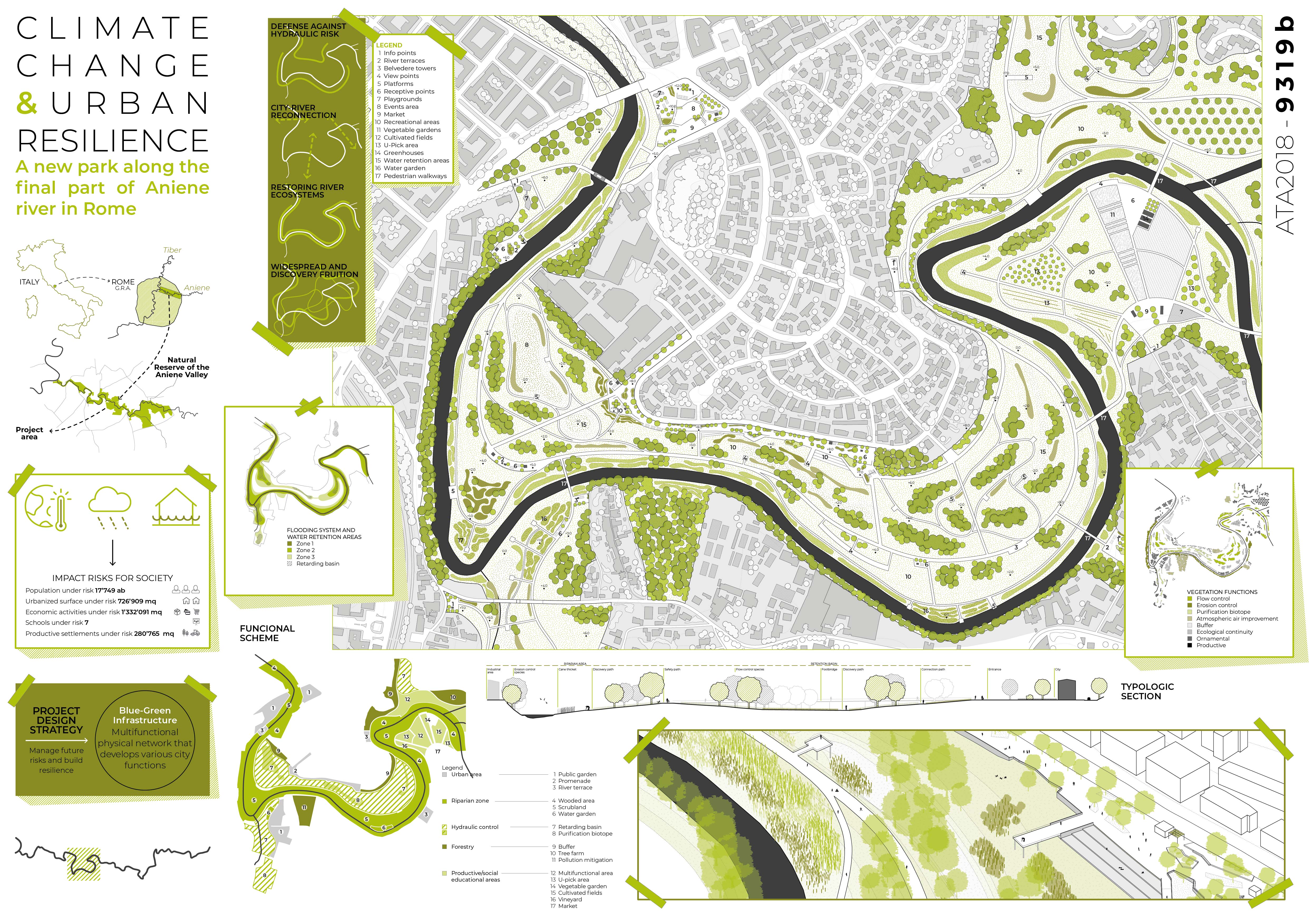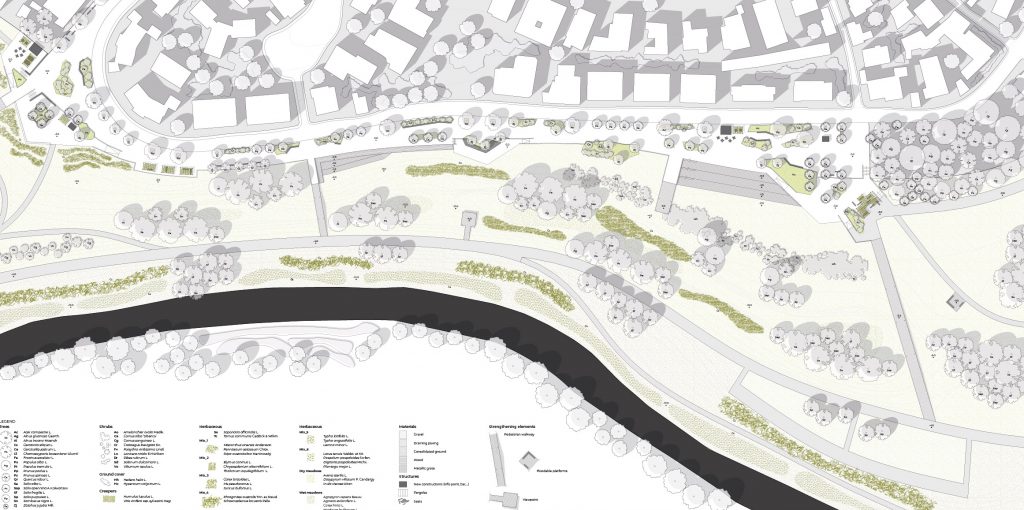Climate change has unequivocally happened. Recent studies have proved that this is due to big and small natural disasters (floods, inundations, droughts, cyclones and tornadoes, tsunamis, volcanic eruptions, earthquakes, landslides). These events have the potential to make certain places inhospitable, having effects on every aspect of our society, from economy up to ecosystems.
The park project, which is the subject of my master thesis, investigates the environmental risks mitigation and climate changes adaptation. In particular, it refers to danger situations both in urban and extra urban areas, due to the problems connected to flood risk and extreme weather events.
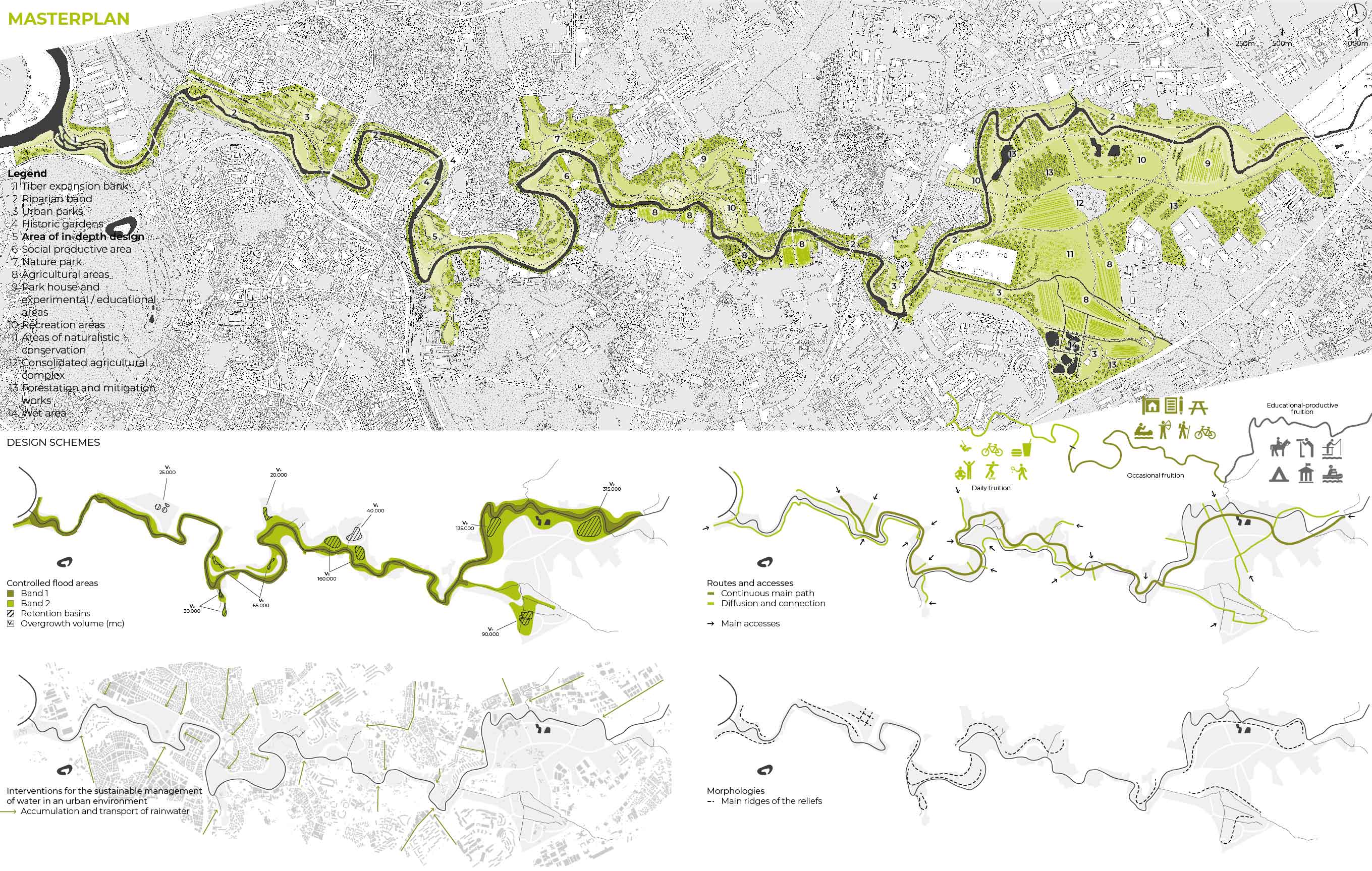
The area I have considered is the Natural Reserve of Aniene Valley and the stretch of the river that crosses the city of Rome, between the GRA and its confluence with the Tiber River. This is a notoriously area prone to repeated and increasingly frequent flooding. The project purpose is to develop a capable system to provide the whole area a better place to live in, in order to make possible the use of the resource water, without neglecting safety in case of extreme natural events. That's why the recovery of ecological quality and the upgrading of urban, extra-urban and rural areas near the river, represent useful planning opportunities to create new spaces, capable to provide both renewed recreational and regenerated ecosystem functions. Looking at the area in its entirety, almost 650ha of park, the solution found, to achieve sustainability and resilience objectives, is to plan and implement a Blue-Green Infrastructure. This strategy can make the connection with the river and the city through the park, interacting with communities, ecology and hydrology. Moreover, this solution can bring significant benefits to the entire environmental system: reducing maintenance costs, creating new habitats, catching and cleaning rainwater, improving soil conditions, improving air quality, promoting new lifestyles. The design proposal aims to put into effects the teachings for an innovative and sustainable park design that turns out to be resilient to climate changes.
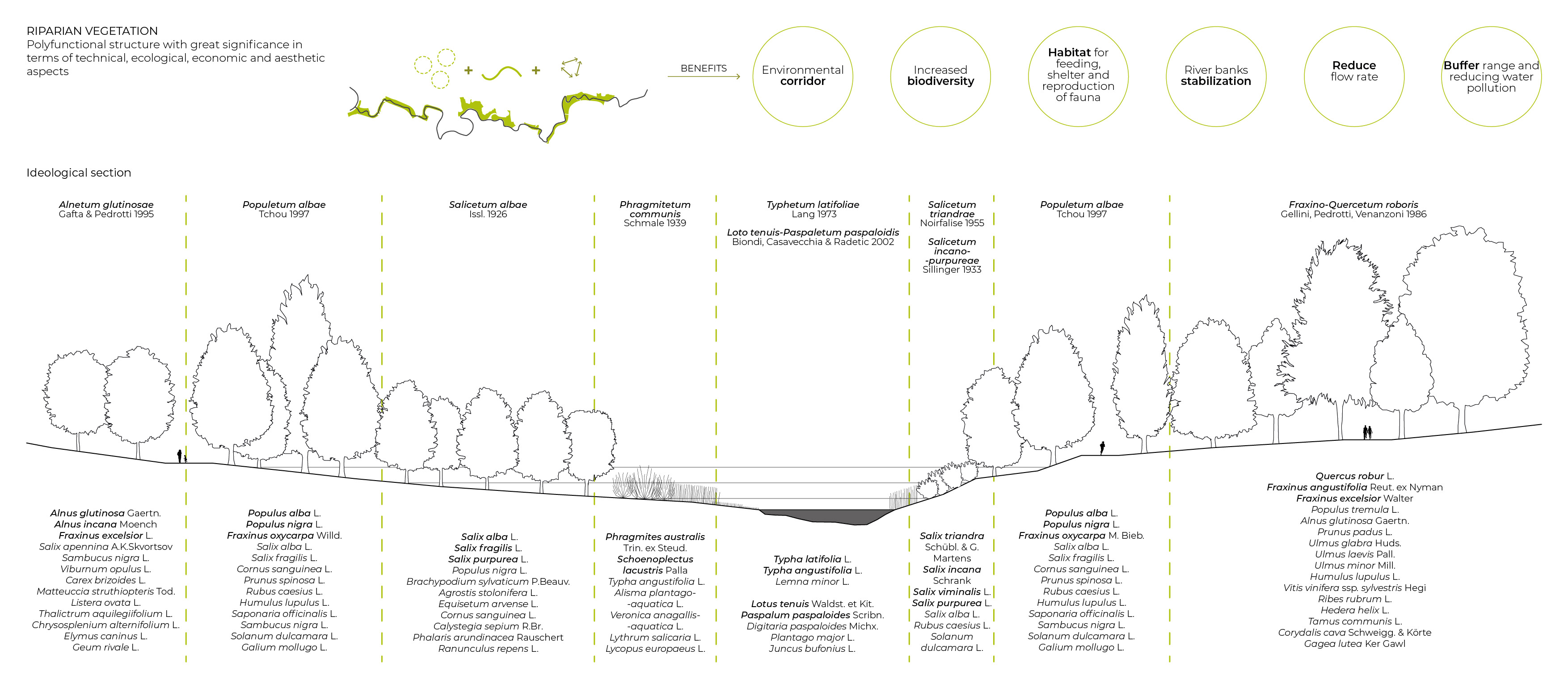
RETARDING and RETENTION BASINS, carefully studied and calibrated, have been inserted inside the park to generate controlled flooding in order to reduce hydraulic risk in the most susceptible areas. At the same time, the morphologies and ground movements created to implement these strategies, are design elements to accommodate diversified functions such as recreational or ecological stepping stones. Three PATH typologies innervate the whole park by linking every function, whether recreational or ecological, encouraging the guest into new and diversified feelings. VEGETATION plays an important role in the ecosystemic equilibrium of BGI and in the stability of the natural flora and fauna sub-systems: conservation and maintenance of the existing ecological heritage, the improvement of the river corridor, and the improvement of the river and environmental ecological network. The key criterion in choosing this was the hydraulic risk: selection of suitable species for both erosion and runoff of riverbanks control as well as flow rate control. In terms of urban forestry works, the measures taken are aimed at carbon sequestration, pollution mitigation and biodiversity conservation. The particular design solutions introduced are also intended to reconcile the relationship between river and city, where the winning idea has been to consider natural events no more problematic but as an opportunity for new experience sources.
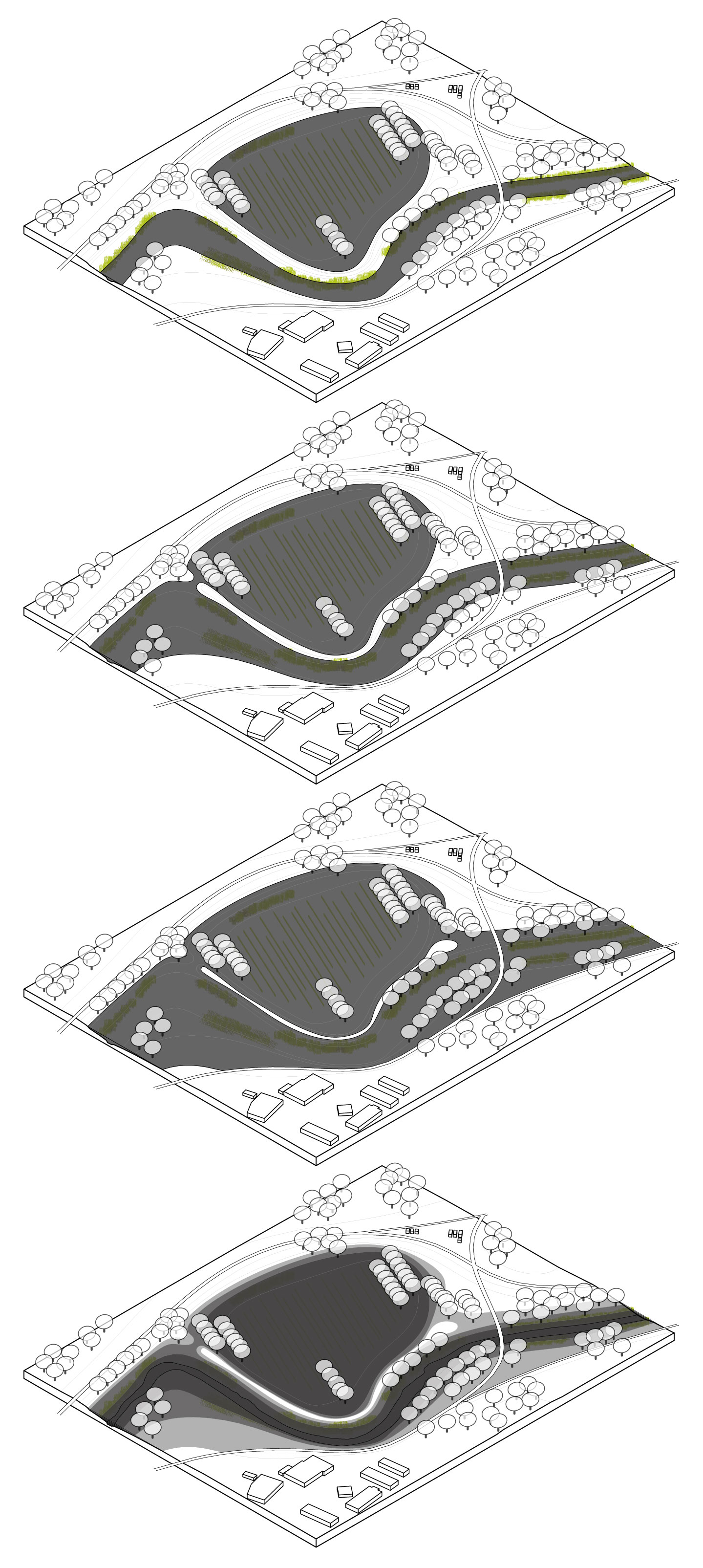
The Board:
